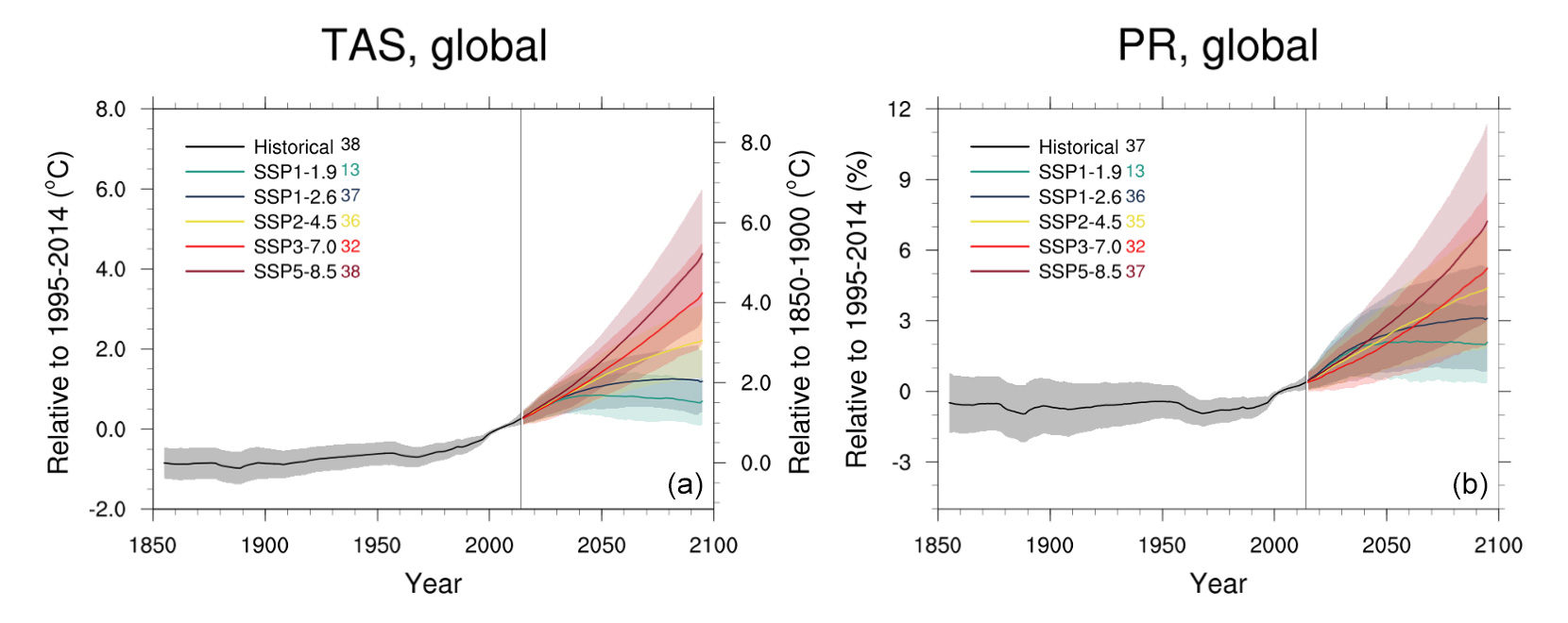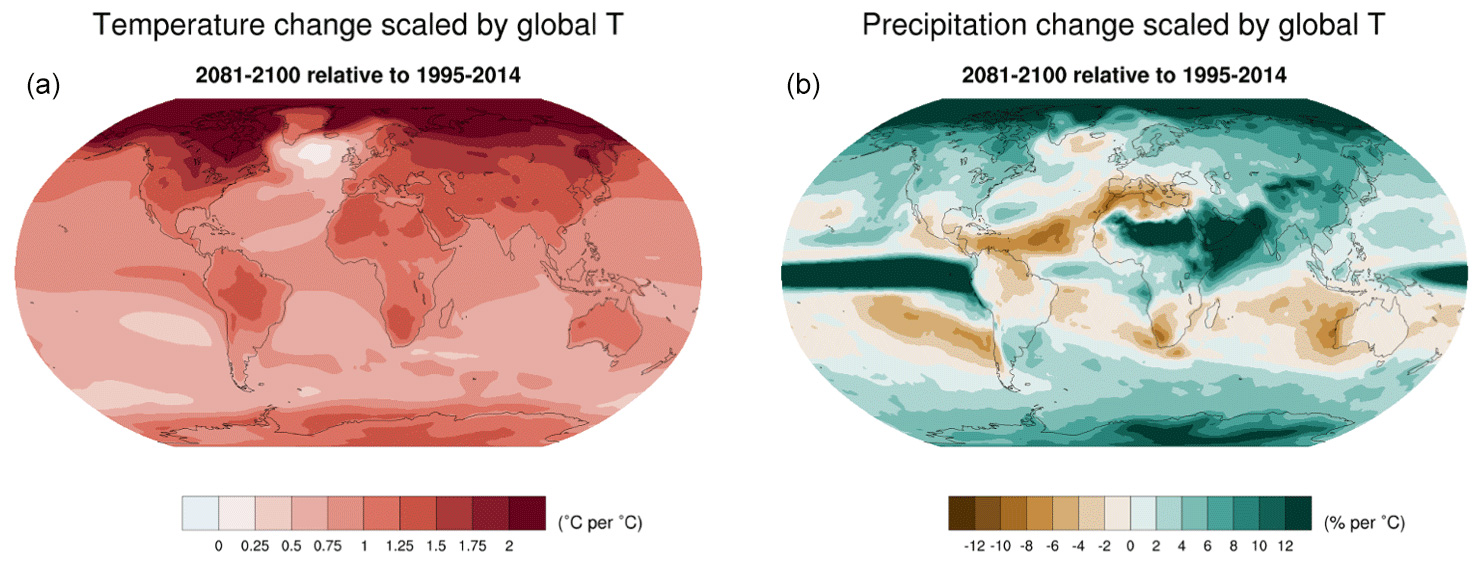CMIP6’s Scenario-Based Temperature and Precipitation Projections
A study provides an overview of the consequences of a new set of future scenarios based on the simulations of Earth system models from all over the world.

Figure 1. Temperature and precipitation projections under the new Shared Socioeconomic Pathway-RCP scenarios and from the new CMIP6 models participating in ScenarioMIP.
The Science
A large multidisciplinary effort has produced new anthropogenic emission scenarios for the 21st century exploring alternative futures for humanity’s socio-economic development based on the Shared Socioeconomic Pathways (SSPs). Climate modelers ran these scenarios through their Earth system models and produced corresponding climate system changes. This paper synthesizes results for temperature and precipitation changes over the coming decades, comparing SSP-based scenarios with lower or higher mitigation levels (Fig. 1). The scenarios considered produce global warming of over 5 ºC (highest emissions) and as low as 1.5 ºC (highest mitigation). The 1.5 ºC threshold – the goal of the Paris Agreement – is, on average across models, projected to be reached within the current decade no matter the scenario.
The Impact
Many different types of research concerned with future global changes base their analyses on these types of scenarios/Earth system model outcomes. This paper provides the necessary backdrop for many of these studies, including those focused on changes expected in the climate system, impacts of climatic changes on human and natural systems, or mitigation choices and their consequences. The study also shows the concerted efforts of the many scientists around the world that have developed the latest generation of Earth system models (including the Energy Exascale Earth System Model (E3SM)) and used them to explore the new future emission scenarios, which involved large investments in human and computational resources.
Summary
This overview paper reports temperature and precipitation changes across SSP-based scenarios from the Scenario Model Intercomparison Project (ScenarioMIP) of the Coupled Model Intercomparison Project Phase-6 (CMIP6), describing a range of global temperature changes from the attainment of the Paris agreement ambition of 1.5 °C to global warming in excess of 5 °C. The paper includes precipitation projections that correspond to different temperature changes. It highlights robust results across various models and includes sources of uncertainties.
There are no striking surprises in the geographic features in the patterns of warming, wetting, or drying, where the first-order change is in the overall intensity and linked to the magnitude of global warming. Overall, the Arctic and northern regions warm the most and land warms more than the ocean as shown in Figure 2(a).
For precipitation (Fig. 2(b)), the strongest positive changes are in the equatorial Pacific and the highest latitudes of both hemispheres, especially the Arctic region. The large changes in subtropical Africa and Asia are due more to the small precipitation amounts of the climatological averages in these regions (at the denominator of these percent changes) than to a truly substantial increase in precipitation. A strong drying signal continues to be projected for the Mediterranean together with central America, the Amazon region, southern Africa and western Australia.
Some new models show a higher sensitivity to greenhouse gas forcing, producing new global warming projections that tend to be higher than those of previous generations. These extreme changes cannot be excluded but receive less weight if these models’ ability to reproduce historical behavior is used to gauge their reliability.
Publication
- Tebaldi, C, K Debeire, V Eyring, E Fischer, J Fyfe, P Friedlingstein, R Knutti, et al. 2021. “Climate model projections from the Scenario Model Intercomparison Project (ScenarioMIP) of CMIP6.” Earth System Dynamics 12(1): 253-293. https://doi.org/10.5194/esd-12-253-2021.
Funding
- The U.S. Department of Energy Office of Science, Biological and Environmental Research supported this research as part of the Earth System Model Development Program Area through the Energy Exascale Earth System Model (E3SM) project.
Contact
- L. Ruby Leung, Pacific Northwest National Laboratory



